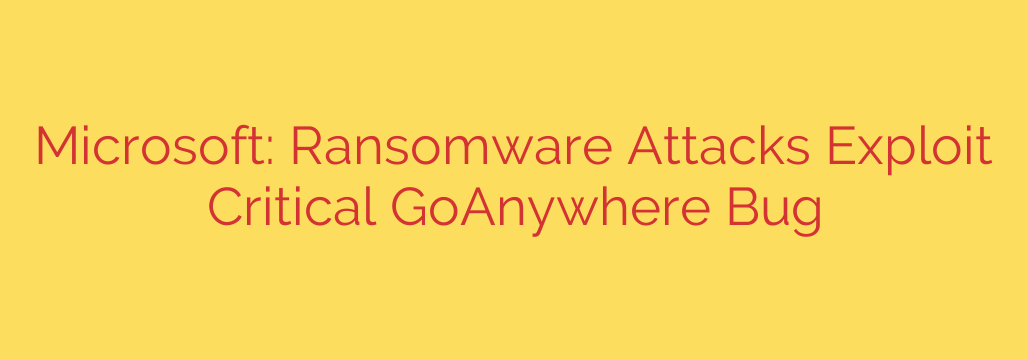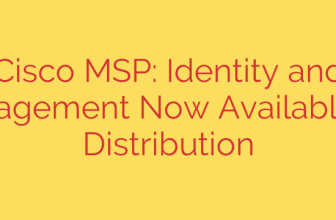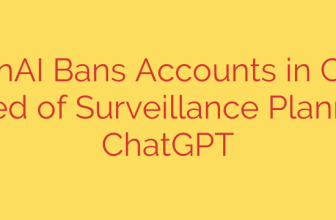
Urgent Security Alert: Ransomware Gangs Exploiting Critical GoAnywhere Vulnerability
A critical vulnerability in the popular GoAnywhere Managed File Transfer (MFT) software is being actively exploited by ransomware groups to steal sensitive data from organizations worldwide. Security researchers, including Microsoft’s Threat Intelligence team, have issued warnings about these ongoing attacks, urging all users to take immediate action to protect their systems.
The flaw, tracked as CVE-2023-0669, is a severe remote code execution vulnerability that allows attackers to gain initial access to a vulnerable GoAnywhere MFT server without authentication. This means a threat actor can take control of a publicly exposed system without needing a username or password, making it an incredibly dangerous entry point into a corporate network.
How the Attack Unfolds
The attack chain is dangerously efficient. Cybercriminals scan the internet for GoAnywhere MFT instances with their administrative consoles exposed. Once a vulnerable target is identified, the attackers exploit CVE-2023-0669 to deploy malicious tools and gain a foothold.
From there, the primary goal is data exfiltration. The attackers are known to steal large volumes of sensitive files, including customer data, financial records, and intellectual property. After securing the stolen data, they proceed with their extortion demands. Instead of just encrypting files, they threaten to leak the confidential information publicly if a ransom is not paid.
Microsoft has linked these attacks to a financially motivated group it tracks as Lace Tempest, which is widely known to operate the Clop (or Cl0p) ransomware and extortion platform. This group has a long history of exploiting similar vulnerabilities in file transfer solutions to execute widespread data theft campaigns.
Key Indicators of Compromise
Security teams should be on high alert for signs of a potential breach. If your organization uses GoAnywhere MFT, it is crucial to investigate for the following indicators of compromise (IoCs):
- Suspicious User Accounts: Attackers have been observed creating new user accounts, often with names like “help” or “system,” to maintain persistence.
- Unusual Files: The presence of unexpected tools or scripts in server directories could signal a breach. Look for files like
NetScan.exeorErrors.jsp. - Suspicious Log Entries: Review server logs for anomalous activity, such as unexpected commands being executed or connections from unfamiliar IP addresses. A specific sign is a log entry showing a request containing the string
"/goanywhere/lic/accept".
Essential Steps to Protect Your Organization
The active exploitation of this vulnerability requires immediate and decisive action. Failing to secure your systems could result in significant data loss, financial damage, and reputational harm.
Patch Immediately: The single most important step is to update your GoAnywhere MFT software to version 7.1.2 or later. The developer, Fortra, has released a patch that fully remediates this vulnerability. Do not delay this update.
Review System Access: Do not expose the GoAnywhere administrative console to the public internet. This is a critical security best practice. Access should be restricted to trusted internal networks or secured behind a VPN and firewall. If external access is absolutely necessary, ensure strict access control lists are in place.
Hunt for Threats: Even after patching, you must assume your system may have already been compromised. Conduct a thorough investigation using the Indicators of Compromise listed above. If any suspicious activity is found, immediately activate your incident response plan.
Enhance Your Security Posture: Use this incident as an opportunity to review and strengthen your overall security measures. Ensure that critical systems are monitored, multi-factor authentication (MFA) is enabled wherever possible, and regular security audits are performed.
The GoAnywhere MFT vulnerability is not a theoretical threat—it is a clear and present danger being used by sophisticated attackers to steal valuable data. By patching systems, restricting access, and actively hunting for signs of a breach, organizations can defend themselves against this aggressive ransomware campaign.
Source: https://www.bleepingcomputer.com/news/security/microsoft-critical-goanywhere-bug-exploited-in-ransomware-attacks/








